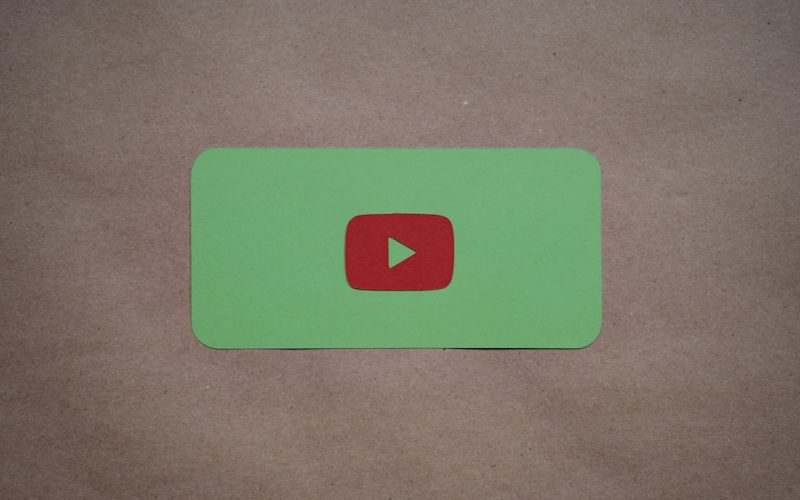As I delve into the world of social media marketing, I find Pinterest to be a unique and powerful platform that often gets overlooked. Unlike other social media sites that focus on interaction and engagement, Pinterest operates more like a visual search engine. Users come to Pinterest with the intent to discover, plan, and create, making it an ideal space for driving traffic to my blog or website.
The platform’s visual nature allows me to showcase my content in a way that is both appealing and informative, capturing the attention of potential visitors who are searching for inspiration or solutions. What truly fascinates me about Pinterest is its longevity as a traffic source. Unlike posts on platforms like Facebook or Instagram that quickly fade from visibility, pins can continue to drive traffic long after they are published.
This means that by investing time in creating high-quality pins and boards, I can reap the benefits for months or even years to come. The ability to reach a vast audience interested in my niche is a game-changer, and understanding how to leverage this platform effectively is crucial for anyone looking to enhance their online presence.
Table of Contents
ToggleKey Takeaways
- Pinterest is a valuable traffic source for driving visitors to your website or blog.
- Creating a Pinterest business account is essential for accessing analytics and advertising features.
- Optimize your Pinterest profile by using relevant keywords, a clear profile picture, and a descriptive bio.
- Curate and create Pinterest boards that are visually appealing and relevant to your target audience.
- Design eye-catching pins with high-quality images, clear text overlay, and branding elements.
- Utilize keywords and hashtags in pin descriptions and board titles to improve search visibility.
- Join and participate in Pinterest group boards to expand your reach and engage with a larger audience.
- Use Pinterest analytics to track the performance of your pins and boards, and adjust your strategy accordingly.
- Integrate Pinterest with your WordPress blog by adding Pin It buttons and sharing your content on the platform.
- Implement marketing strategies such as running contests, collaborating with influencers, and promoting your products or services on Pinterest.
- Measure and analyze the impact of Pinterest on your blog traffic by tracking referral traffic and engagement metrics.
Creating a Pinterest Business Account
To fully harness the potential of Pinterest, I recognize the importance of creating a business account.
This type of account offers features that are specifically designed for marketers, such as access to Pinterest Analytics and the ability to run ads.
Setting up my business account was straightforward; I simply followed the prompts on the Pinterest website, providing essential information about my brand and website.
This initial step was crucial, as it laid the foundation for my future marketing efforts on the platform. Once my business account was established, I was able to explore various tools and resources that Pinterest offers to help businesses grow. For instance, I gained access to rich pins, which allow me to include additional information directly on my pins, making them more informative and engaging.
This feature not only enhances the user experience but also increases the likelihood of users clicking through to my website. By taking this step, I positioned myself to take full advantage of everything Pinterest has to offer.
Optimizing Your Pinterest Profile for Maximum Visibility

With my business account set up, I turned my attention to optimizing my Pinterest profile for maximum visibility. I understood that my profile serves as the first impression for potential followers and visitors, so I made sure it accurately reflected my brand identity. I carefully crafted my bio, incorporating relevant keywords that describe what I do and what users can expect from my content.
This not only helps in attracting the right audience but also improves my profile’s searchability within Pinterest.
In addition to my bio, I paid close attention to my profile picture and cover image. I chose a clear and professional logo for my profile picture, ensuring it was easily recognizable even at smaller sizes.
For my cover image, I selected a visually appealing collage of some of my best-performing pins. This not only showcases my content but also entices users to explore further. By taking these steps, I created a cohesive and inviting profile that encourages users to follow me and engage with my content.
Creating and Curating Pinterest Boards
| Board Name | Number of Pins | Number of Followers | Average Repins |
|---|---|---|---|
| Travel Inspiration | 150 | 500 | 50 |
| Healthy Recipes | 200 | 700 | 75 |
| DIY Home Decor | 100 | 300 | 30 |
Creating and curating Pinterest boards is an essential aspect of my strategy on the platform. I began by brainstorming topics that align with my niche and resonate with my target audience. Each board serves as a collection of related pins, making it easier for users to find content that interests them.
I made sure to give each board a descriptive title and an engaging description filled with relevant keywords. This not only helps with SEO but also provides context for users browsing through my boards. Curating content from other creators is another strategy I embraced.
By pinning high-quality content from others in my niche, I positioned myself as a valuable resource for users seeking inspiration or information. This practice not only enriches my boards but also fosters community engagement. When I pin others’ content, it often leads to reciprocal actions, where they may pin my content in return.
This mutual sharing can significantly expand my reach and visibility on the platform.
Designing Eye-Catching Pins
One of the most critical elements of my Pinterest strategy is designing eye-catching pins. I quickly learned that visually appealing pins are more likely to be shared and clicked on, so I invested time in honing my design skills. Using tools like Canva, I created pins that feature bold colors, clear text, and captivating images.
I made sure that each pin aligns with my brand’s aesthetic while also standing out in users’ feeds. In addition to aesthetics, I focused on creating pins that convey value at a glance. Whether it’s through compelling headlines or informative graphics, I aimed to communicate what users can expect when they click through to my content.
Experimenting with different formats—such as infographics, step-by-step guides, or quote graphics—allowed me to see what resonates best with my audience. By continually refining my pin designs based on performance metrics, I ensured that I was always putting forth the most engaging content possible.
Utilizing Keywords and Hashtags for Pinterest SEO

To maximize the visibility of my pins and boards, I recognized the importance of utilizing keywords and hashtags effectively for Pinterest SEO. Conducting keyword research became an integral part of my strategy; I explored what terms users were searching for within my niche and incorporated those keywords into my pin descriptions, board titles, and profiles. This practice not only improved my chances of appearing in search results but also helped me understand what topics were trending among users.
In addition to keywords, I began using relevant hashtags strategically in my pin descriptions. While hashtags are not as central to Pinterest as they are on platforms like Instagram or Twitter, they still play a role in categorizing content and making it discoverable. By combining both keywords and hashtags thoughtfully, I created a comprehensive approach to SEO that significantly enhanced the visibility of my content on Pinterest.
Joining and Participating in Pinterest Group Boards
Joining and participating in Pinterest group boards has proven to be an effective way for me to expand my reach on the platform. Group boards allow multiple contributors to share their pins within a single board, creating a collaborative space where diverse content can thrive. By finding group boards relevant to my niche, I was able to tap into established audiences who were already interested in similar topics.
Once I joined these boards, I made it a point to contribute regularly while adhering to each board’s rules and guidelines. This not only helped me gain exposure but also fostered relationships with other creators in my niche. Engaging with fellow contributors by commenting on their pins or sharing their content further strengthened these connections.
As a result, I found that group boards became a valuable asset in driving traffic back to my blog.
Using Pinterest Analytics to Track Performance
To gauge the effectiveness of my efforts on Pinterest, I turned to Pinterest Analytics as a vital tool for tracking performance. The analytics dashboard provides insights into how my pins are performing—showing me which ones are getting the most impressions, clicks, and saves. By analyzing this data regularly, I could identify trends and patterns that informed my future strategies.
For instance, if certain types of pins consistently performed better than others, I would focus more on creating similar content moving forward. Additionally, understanding which boards attracted the most engagement allowed me to refine my curation strategy further. By leveraging these insights from Pinterest Analytics, I could make data-driven decisions that ultimately enhanced my overall performance on the platform.
Integrating Pinterest with Your WordPress Blog
Integrating Pinterest with my WordPress blog was another crucial step in maximizing traffic from this platform. To facilitate easy sharing of my blog posts on Pinterest, I installed a plugin that added “Pin It” buttons directly onto my images. This simple addition encouraged readers to share my content effortlessly while browsing through my blog.
Moreover, I made sure that each blog post included visually appealing images optimized for Pinterest sharing. By creating custom graphics tailored specifically for each post, I increased the likelihood of users pinning them directly from my site. This integration not only streamlined the sharing process but also ensured that every piece of content had the potential to reach a wider audience through Pinterest.
Implementing Pinterest Marketing Strategies
As I continued to explore Pinterest’s potential as a marketing tool, I began implementing various strategies tailored specifically for this platform. One approach involved creating seasonal or timely content that aligned with current trends or holidays—this allowed me to capitalize on increased user activity during specific times of the year. For example, crafting holiday-themed pins or guides during peak seasons helped me attract more visitors looking for relevant information.
Additionally, running promoted pin campaigns became part of my strategy as well. By investing in targeted ads on Pinterest, I could reach specific demographics interested in topics related to my blog. This paid approach complemented my organic efforts and provided an additional avenue for driving traffic while increasing brand awareness among potential followers.
Measuring and Analyzing the Impact of Pinterest on Blog Traffic
Finally, measuring and analyzing the impact of Pinterest on my blog traffic has been essential in understanding its effectiveness as a marketing channel. By using Google Analytics alongside Pinterest Analytics, I could track referral traffic coming from Pinterest specifically—this allowed me to see how many visitors were landing on my blog as a result of their interactions with my pins. Over time, I noticed significant increases in traffic correlating with specific campaigns or pin designs that resonated well with users.
This data not only validated the time and effort invested in optimizing my presence on Pinterest but also provided insights into what types of content were most appealing to my audience. By continuously monitoring these metrics and adjusting strategies accordingly, I’ve been able to create a sustainable approach that leverages Pinterest as a powerful traffic source for my blog. In conclusion, embracing Pinterest as a traffic source has transformed how I approach online marketing for my blog.
From setting up a business account to optimizing profiles and creating engaging content, each step has contributed significantly toward building an effective presence on this unique platform. As I continue refining these strategies based on performance metrics and audience engagement, I’m excited about the ongoing potential that Pinterest holds for driving traffic and growing my brand online.
If you’re looking to enhance your WordPress blog’s visibility and drive significant traffic, leveraging Pinterest can be a game-changer. For those interested in further optimizing their WordPress site to handle increased traffic and ensure a professional appearance, you might find the article on Professional WordPress Website Designing Services particularly useful. This resource provides insights into designing a WordPress site that not only attracts visitors but also retains them, complementing your efforts to drive traffic through platforms like Pinterest.
FAQs
What is Pinterest?
Pinterest is a social media platform that allows users to discover, save, and share visual content such as images and videos. Users can create and organize collections of content, known as “boards,” and engage with other users by following their boards and sharing content.
How can Pinterest drive traffic to a WordPress blog?
Pinterest can drive traffic to a WordPress blog by allowing users to save and share blog posts, images, and other content from the blog onto their Pinterest boards. When users engage with this content on Pinterest, it can lead to increased visibility and traffic to the WordPress blog.
What are some tips for using Pinterest to drive traffic to a WordPress blog?
Some tips for using Pinterest to drive traffic to a WordPress blog include creating visually appealing and engaging content, using keywords and hashtags to optimize content for search, engaging with other users and boards, and utilizing Pinterest’s analytics to track and optimize performance.
How can I integrate Pinterest with my WordPress blog?
You can integrate Pinterest with your WordPress blog by adding Pinterest sharing buttons to your blog posts, embedding Pinterest widgets or boards onto your blog, and using Pinterest’s Rich Pins feature to provide additional information and context for your blog content on Pinterest.
Is Pinterest a good platform for driving traffic to a WordPress blog?
Pinterest can be a good platform for driving traffic to a WordPress blog, especially if the blog’s content is visually appealing and can be easily shared and discovered on Pinterest. However, the effectiveness of Pinterest for driving traffic may vary depending on the blog’s niche and target audience.




